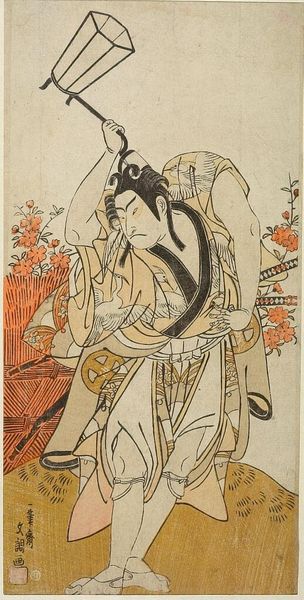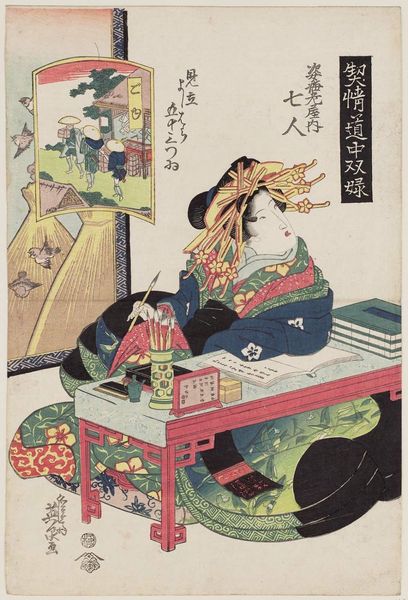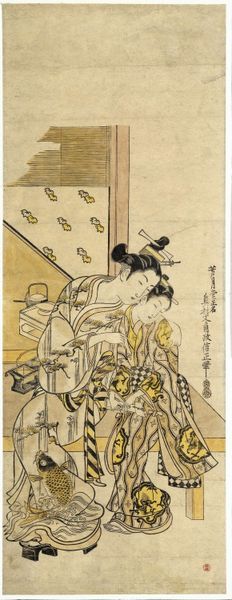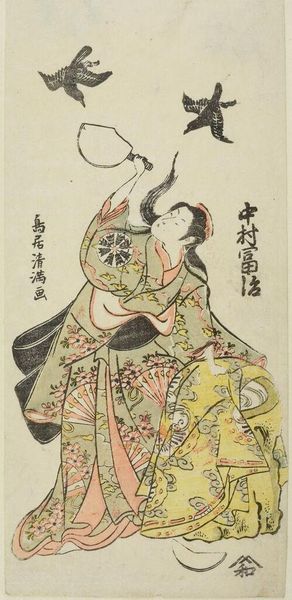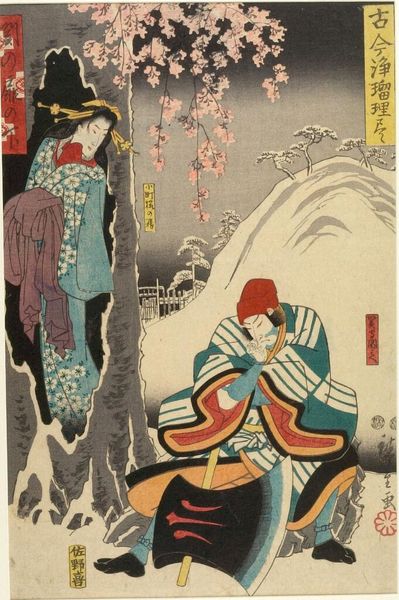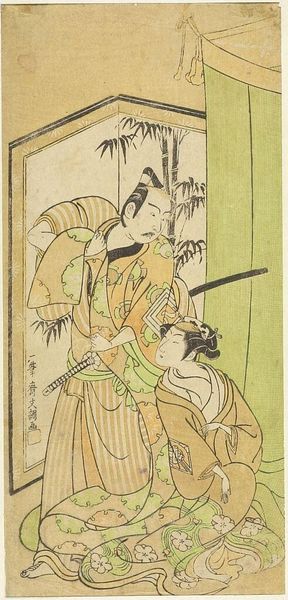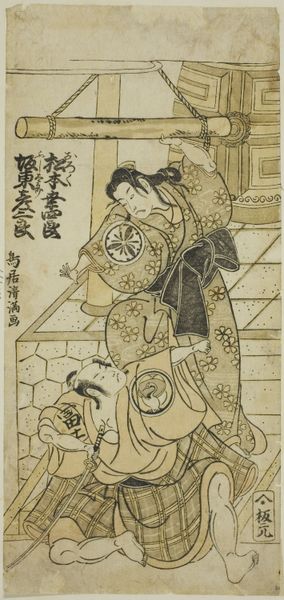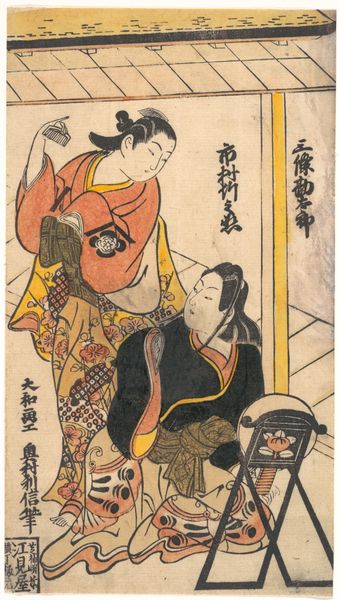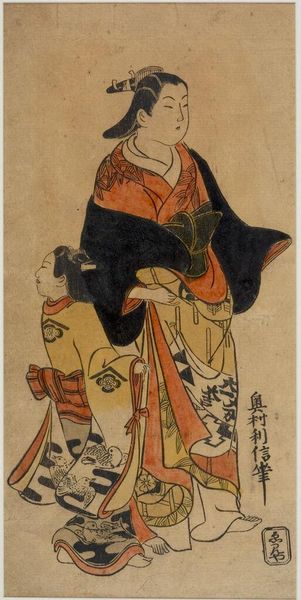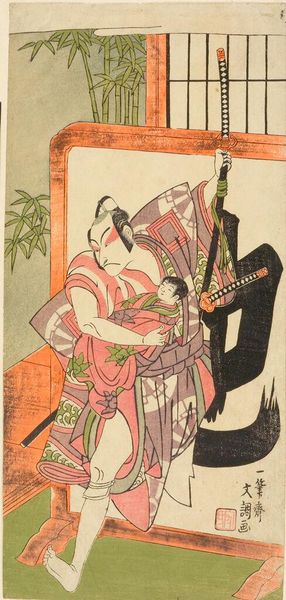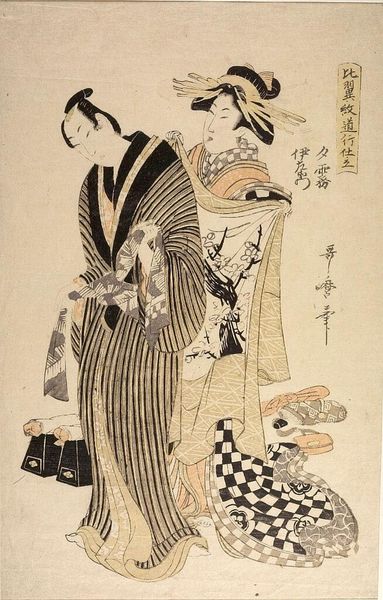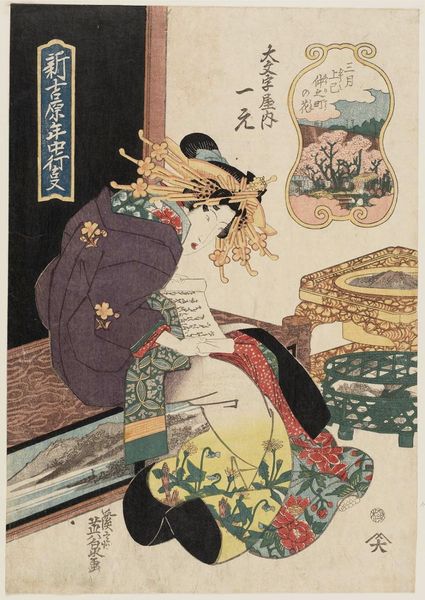
Actors SANJO KANTARO AND Sawamura SÅjÅ«rÅ Mid Edo period,
0:00
0:00
Dimensions: Paper: H. 30.2 cm x W. 15.2 cm (11 7/8 x 6 in.)
Copyright: CC0 1.0
Curator: Immediately, I'm struck by the texture of the paper, its delicate quality contrasting with the bold lines of the figures. Editor: This is a woodblock print by Okumura Toshinobu titled "Actors Sanjo Kantaro and Sawamura Sojuro," now residing at the Harvard Art Museums. It dates back to the first half of the 18th century. Curator: Woodblock printing suggests a fascinating process, a layering of colors and textures. We see common, everyday materials transformed through skilled labor into an image meant for public consumption. I wonder, what was the intended audience for these actor prints? Editor: These prints, *yakusha-e*, were popular among the burgeoning urban classes in Edo, serving as a form of celebrity endorsement and advertising. The actors depicted were cultural icons, their images circulated widely. Curator: So the artist, Toshinobu, becomes a mediator, shaping public perception of these performers. How does this imagery bolster the actors' careers, and what role does the theater play in the broader social landscape? Editor: Exactly. The theater served as a vital public space, reflecting and shaping societal values. Considering that the prints were widely circulated, Toshinobu’s work effectively democratized access to these images. Curator: Seeing the final result, it’s easy to overlook the intricate labor involved. Examining the materials and production reveals the interconnectedness of art, commerce, and social life in Edo period Japan. Editor: Precisely. And studying its role within the context of early advertising adds another layer to the cultural history of this beautiful artwork.
Comments
No comments
Be the first to comment and join the conversation on the ultimate creative platform.
